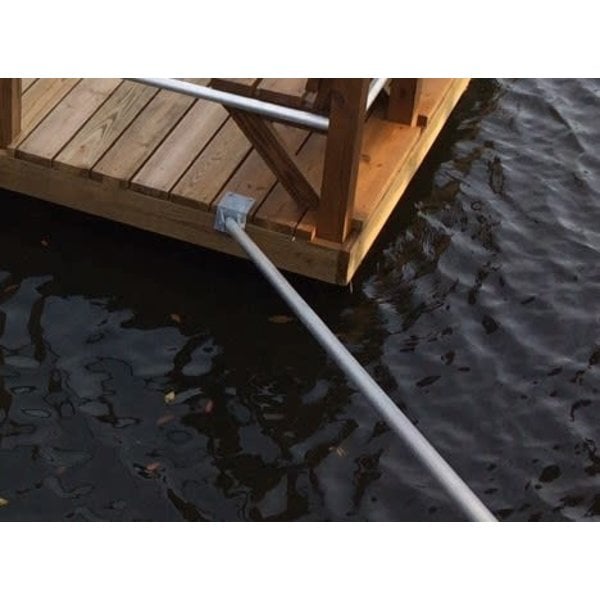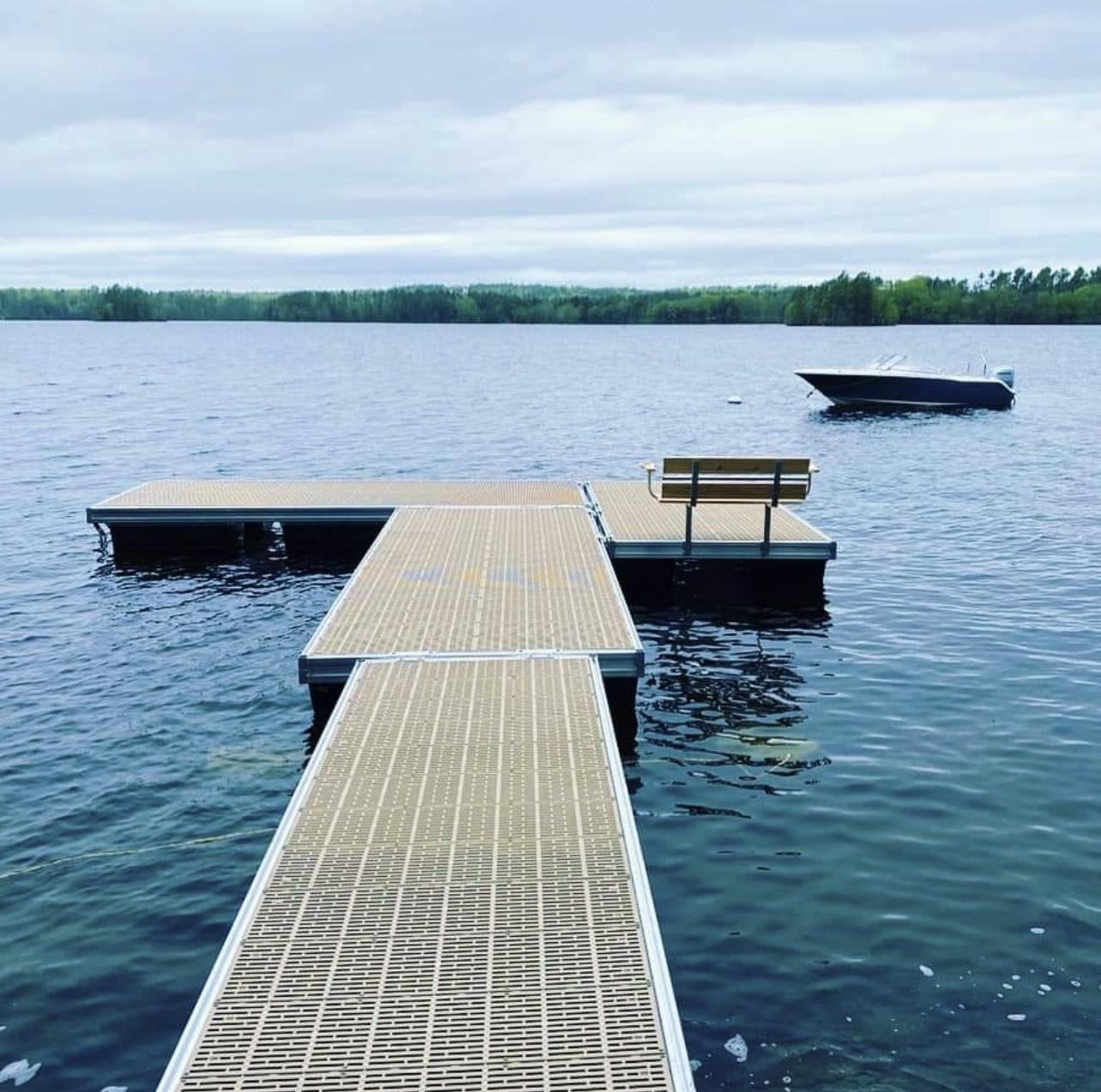Optimizing Your Outdoor Area with Specialized Floating Dock Solutions
Optimizing Your Outdoor Area with Specialized Floating Dock Solutions
Blog Article
Develop the Perfect Docking Service With Floating Docks
Floating docks present a functional remedy for a range of maritime requirements, adapting seamlessly to rising and fall water degrees and varied vessel types. As we discover the necessary components that add to the effectiveness of floating docks, several essential variables relating to stability and upkeep will certainly emerge, raising questions concerning just how to optimize your docking experience.

Benefits of Floating Docks
Floating docks deal numerous advantages that make them an excellent choice for numerous maritime applications. One of the primary advantages is their flexibility to altering water levels. Unlike repaired docks, floating docks fluctuate with the tide, making sure consistent ease of access for vessels. This feature is particularly crucial in locations susceptible to substantial tidal changes or seasonal water degree modifications.
Additionally, floating docks are usually easier and quicker to mount compared to standard set structures. Their modular style permits for uncomplicated setting up and disassembly, facilitating maintenance and moving when needed. This versatility is especially advantageous for short-term applications or in atmospheres where problems may change.
Floating docks additionally have a tendency to be much more eco-friendly, as they reduce disruption to the seabed and bordering water communities. Their resilient nature decreases the risk of damages to marine life, promoting a much healthier atmosphere. In addition, these docks can be tailored to suit numerous vessel dimensions, making sure that they meet specific operational demands - floating dock company.
Eventually, the mix of flexibility, simplicity of installment, and ecological considerations makes floating docks an extremely reliable solution for a variety of maritime needs.
Selecting the Right Products
Selecting the proper materials for floating docks is essential to make sure security, long life, and longevity. The selection of products straight affects the dock's efficiency in numerous environmental conditions, consisting of direct exposure to water, sunshine, and possible wear from marine website traffic.
Usual products made use of for floating docks consist of light weight aluminum, wood, and high-density polyethylene (HDPE) Aluminum is lightweight, corrosion-resistant, and calls for marginal upkeep, making it an exceptional option for long life. Its preliminary cost can be higher compared to various other products.
Timber, while aesthetically appealing and providing a traditional appearance, can be at risk to rot and pest damage if not correctly treated. For that reason, making use of pressure-treated wood or normally long lasting types like cedar or redwood can reduce these concerns.
HDPE is a prominent choice as a result of its resistance to UV rays and chemicals, along with being eco-friendly. floating dock company. It is offered and lightweight in numerous shades, enabling personalization
Ultimately, the appropriate material option will certainly depend upon details demands, including budget plan, desired aesthetics, and ecological factors to consider. Mindful evaluation of these aspects will certainly result in a effective and resistant floating dock solution.
Layout Considerations for Stability
When designing floating docks, making certain security is a basic read the article element that can significantly affect their functionality and security. Security in floating dock style is influenced by different elements, consisting of buoyancy, weight circulation, and the plan of components. An ideal buoyancy system must use materials that provide sufficient lift while minimizing weight. This balance makes sure that the dock remains above water, also under varying loads.
Weight circulation is crucial; evenly dispersing loads throughout the dock protects against tilting and boosts security. Larger layouts can use enhanced stability, specifically in rough water problems, while longer docks might call for additional assistances to stop drooping.
Another crucial consideration is the published here environmental impact, including wave activity and wind. Integrating functions such as sidewalls or skirting can aid mitigate the results of ecological pressures, keeping stability in adverse problems. Eventually, a mix of thoughtful style, material selection, and understanding of environmental elements will yield a drifting dock that satisfies both stability and safety and security requirements.
Installation Tips and Techniques

Next, protect the essential permits and comply with regional laws, which might dictate installation techniques and ecological considerations. If called for, engage a certified service provider experienced in floating dock setups. Usage top notch products designed for aquatic atmospheres to improve longevity and longevity.
When placing the dock, align it alongside the shoreline to help with simple gain access to. Guarantee that the anchoring system is durable, employing concrete blocks or helical anchors to maintain the dock versus wind and wave action. It's important to account for seasonal water degree fluctuations, consisting of prospective ice activity in cooler climates.
Throughout the setup, ascertain the dock's floatation and stability prior to you can check here wrapping up the anchoring. Consistently evaluate the installment for any kind of indications of wear or damage. By adhering to these tips and strategies, you can attain a secure, practical, and visually pleasing floating dock installation that meets your requirements.
Maintenance and Care Guidelines
Caring and maintaining for floating docks is important to prolonging their life expectancy and making certain secure usage. Routine evaluations must be carried out to identify any type of signs of wear, damages, or marine development. Search for splits, loose fittings, or tarnished locations on the dock's surface area, as these problems can compromise architectural stability.
Cleaning up is vital. Use a stress washing machine to get rid of algae, barnacles, and particles, which can accumulate with time. For stubborn development, consider eco-friendly cleaning agents that won't damage aquatic life.
In addition, check the mooring lines and anchors regularly to ensure they are totally free and secure from corrosion. Replace any type of frayed or damaged lines immediately to maintain security.
Throughout severe climate, such as tornados or freezing conditions, take preventive procedures. Safeguard the dock with extra mooring lines and, if possible, get rid of any kind of removable components to avoid damage.
Verdict
In conclusion, the application of floating docks offers a versatile and efficient docking remedy ideal for numerous maritime applications. With correct setup and normal maintenance, floating docks can offer trusted and effective docking experiences for a vast variety of vessels.
As we explore the important elements that contribute to the effectiveness of floating docks, numerous essential factors concerning stability and upkeep will arise, raising inquiries about just how to optimize your docking experience. Unlike fixed docks, floating docks increase and loss with the trend, making certain regular access for vessels.When making floating docks, making sure security is an essential element that can dramatically impact their capability and safety. Security in floating dock style is influenced by different factors, including buoyancy, weight distribution, and the plan of elements. Ultimately, a mix of thoughtful layout, material choice, and understanding of ecological aspects will yield a drifting dock that meets both stability and security needs.
Report this page